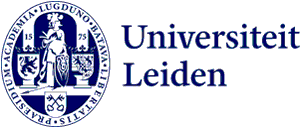
Check it out: NIMAR contributes to COBRA museum exhibition
This summer, the COBRA Museum will be focusing on Moroccan art. 'The other story' exhibition presents for the first time Moroccan modernism in the Netherlands. The Netherlands Institute Morocco (NIMAR) contributed to its exhibition
In the spring of 2021, NIMAR director Léon Buskens received a striking request from the well-known Dutch writer Abdelkader Benali. The COBRA Museum in Amstelveen wanted to organise an exhibition about Moroccan modernism, but had too few works available. Would the institute perhaps like to help in finding loans in Morocco? Coincidentally, this fitted in very well with our own objectives,' says Buskens. 'This year we have been collaborating with the Dutch Ministry of Foreign Affairs on a new project, organising activities that promote academic and cultural exchange between Morocco and the Netherlands.'
As soon as most of the corona restrictions were lifted, director Stefan van Raay and guest curator Abdelkader Benali travelled to Morocco, where Buskens put them in touch with the national museum foundation and the relatively new Mohammed VI Museum. ‘The request was very well received,' he recalls. ‘The director of the museum foundation had considerable knowledge of the COBRA movement, so he felt very much drawn to it. He immediately agreed to give his full cooperation. Stefan van Raay's agreement to lend an exhibition of Cobra art to Rabat sealed the partnership.’
Fifty years of Moroccan modernism
It led to an extensive loan of works that, together with other pieces, provide an overview of Moroccan modernism from the 1950s to the present day. What can visitors expect from this? At the opening, a well-known Dutch artist told me that the art reminded him very much of what he saw in Europe,' says Buskens. ‘That is not illogical: several of the artists studied abroad, so their art is very much in line with international modernism.’
Yet there are also clear differences. ‘Modernist art came into being at about the same time as Morocco regained its independence,' Buskens explains. ‘Artists started thinking about what Moroccan culture was and how it should be represented, because Morocco did not have a strong figurative tradition. They arrived at Moroccan folk art, such as motifs in carpets, pottery, tattoos and jewellery.’
More attention
It makes the works extra interesting for researchers, as became clear during a special afternoon for staff of NIMAR and LUCIS. ‘In cooperation with LUCIS director Nathal Dessing, we invited the Leiden Middle East and Islam researchers for a cultural afternoon in the museum. That led to some very interesting discussions.’
As far as Buskens is concerned, this will not be the last time that NIMAR contributes to an exhibition. ‘We too would like to see more attention paid to folk art and Amazigh art. We will be happy to contribute to their development in the coming years, not least because it fits in well with our project with Foreign Affairs, while on the other hand Morocco has plans to set up a museum of African art, including both contemporary Moroccan art and classical African art.’
